2 Week Peru and Bolivia Itinerary: How to Plan a Trip to Peru and Bolivia

This 2 week Peru and Bolivia itinerary is perfect to see all the highlights in these two countries including a Bogota layover.
Thinking about traveling to Peru and Bolivia but not sure where to start? That’s how I felt when I first started planning my 2 week trip to Peru and Bolivia.
A lot of my friends told me that they wish they’d backpacked Peru & Bolivia together as the countries are right next to each other and the cultures are similar. I took their advice to plan a 2 week Peru and Bolivia itinerary and it was the perfect amount of time to see all the landmarks in Peru and Bolivia.
This blog contains occasional affiliate links, where I receive a small commission on sales of the products/hotels that are linked at no additional cost to you. In addition, as an Amazon Associate, I earn from qualifying purchases. The commission I receive helps me to pay for the cost of running and maintaining this blog. Thank you for supporting my blog.

Peru & Bolivia Travel Overview
Peru and Bolivia are neighboring countries in South America and are usually the first ones people visit when they travel to South America. Since there are so many tourists, it’s very easy to travel in Peru and Bolivia whether you want a luxury trip or backpack tour of Peru and Bolivia.
I flew between cities in order to save time. If you are traveling on a tight budget, take the overnight bus between cities.
Depending on your travel plan and budget, adjust this Peru and Bolivia itinerary below to fit your own need. We did a lot in 2 weeks in Peru and Bolivia and some of the highlights included the Sacred Valley, Inca Trail, Rainbow Mountain, and Uyuni Salt Flat.
2 Week Peru and Bolivia Itinerary
Peru Itinerary: Day 1 – Lima, Peru
Lima is the capital and the largest city of Peru. It’s located in the central coastal part of Peru. Like many other capital cities, Lima has a lot to offer its tourists in terms of historical buildings, museums, restaurants, bars, and entertainments.
Some can argue that you can spend days in Lima and still not see everything, unfortunately for most travelers, 1-2 days is all the time you get in Lima.
Morning: Check out historic center of Lima and grab a bite at Mercado de Surquillo. Mercado de Surquillo is a market within walking distance from Miraflores.
There are a lot of vegetable and fruit stalls as well as places to inside both inside and outside of the market.
South America has many exotic fruits so try them at Mercado de Surquillo. The market is not very big but you will get a good flavor of the local fruits and food people eat in Lima.
While you are at Mercado de Surquillo, be sure to get ice cream at Gelateria Fiorentina (address: Narciso de la Colina 580, Surquillo 1234, Peru).
You will probably have a hard time choosing a flavor at La Gelateria Fiorentina but you should try the lucuma flavor and chirimoya. It’s good to know that La Gelateria Fiorentina is one of the top food places in Lima.
After you are done getting your cheap meal, exotic fruits and gelato from Mercado de Surquillo, take a 15 min walk back to Miraflores and explore the area and its beautiful cliffs.
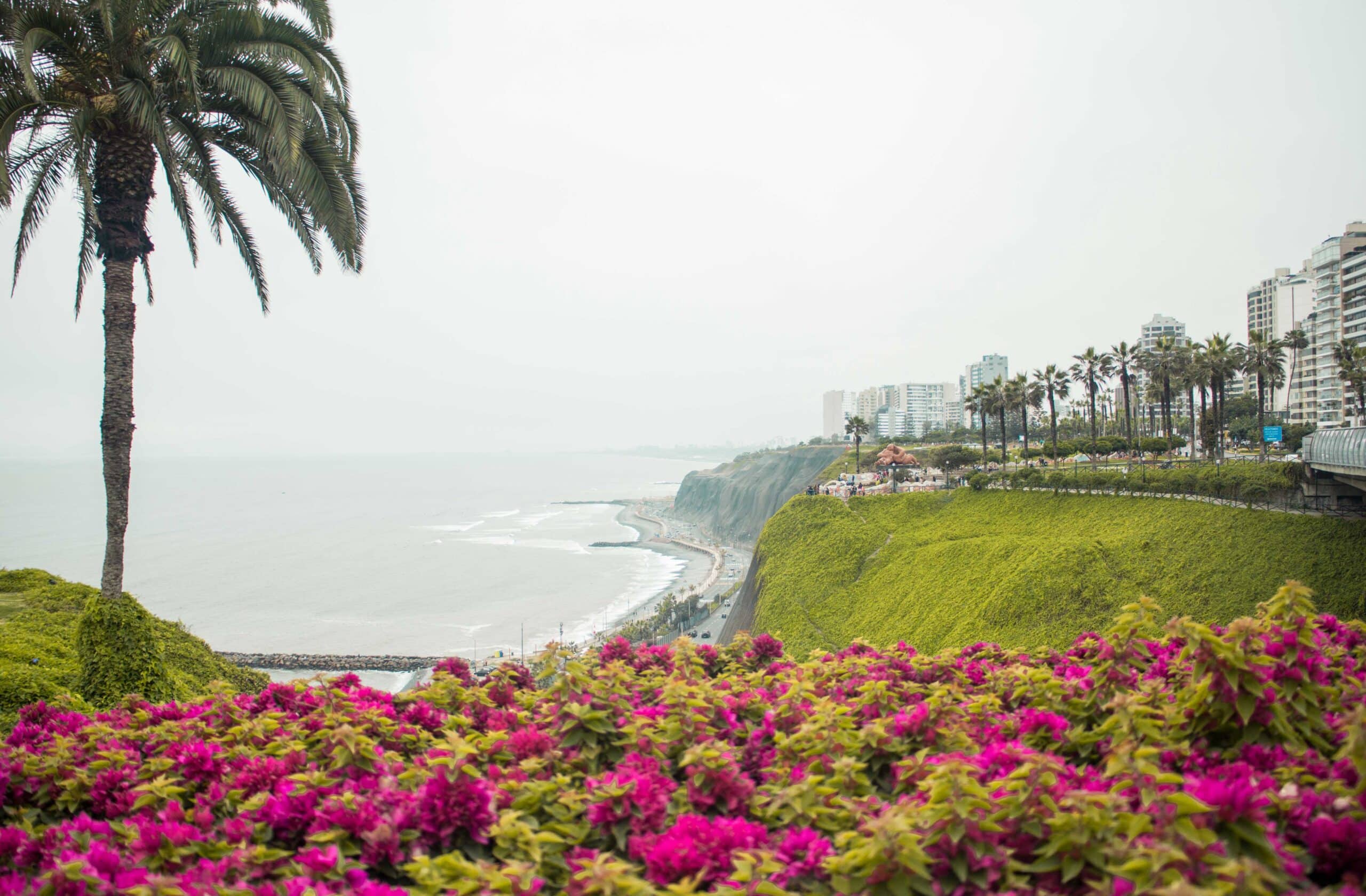
The cliffs in Miraflores are famous and it is no surprise it’s so popular since they look really picturesque against the Pacific Ocean. There is also a park with beautiful mosaic in Miraflores and it’s often crowded with family and kids as well as foreign visitors.
You often see para gliders from this part and paragliding is something you should definitely try in Lima if you have time. This area is one of the best and safest areas in Lima and taking a stroll along the park will lead you to the trendy Larcomar Mall.
Lunch: Take a uber from Miraflores to grab lunch at La Mar if you like seafood and ceviche. Uber is extremely popular, cheap and very safe in Lima and that was our main method of getting around Lima.
Afternoon: Once you are done with lunch at La Mar, come back to an area called Barranco next to Miraflores. Barranco is often overlooked by tourists as it’s overshadowed by its famous neighbor Miraflores.
However Barranco is a very artsy and romantic neighborhood with many art museums and galleries, streets filled with huge colonial and Republican style houses and beachfront areas. Barranco also has many trendy cafes, bars, restaurants and clubs.
Dinner: Explore the food scene and have dinner at Central (No.6 in the world) or Astrid & Gaston (No. 33 in the world). Central is located in Miraflores and you can take a Uber to Astrid Y Gaston. Don’t forget to check out the bars in Barranco after dinner.

Where to stay in Lima
I highly recommend staying in Miraflores as it is safe, close to many good restaurants, and have a fantastic view. There are many high end and medium ranged hotels in Miraflores as well as cute airbnbs. A few hotels/apartments that I would recommend in Lima:
JW Marriott Hotel Lima: Lastly if you prefer a well known hotel then JW Marriott would be a great choice due to its convenient location.
Lima White House: cute B&B next to the beach. Rooms are decently priced including breakfast and the host runs their own city tours.
Tierra Viva Miraflores Mendiburu: Relatively new hotel with a great view on the 8th floor terrace! Close to all the great restaurants in Miraflores and not far from the ocean view sidewalk.
Spacious Apartment in Miraflores: If you have a larger group then staying in an apartment like this one would be better! Close to all the bars and restaurants and ocean view walk.
There is also a very nice supermarket in Miraflores as well as many coffee shops. I would highly advise against staying near the Lima Airport in the area of Callao. It’s not a very safe neighborhood and all my local Peruvian friends avoid that area unless they really need to go to the airport.
How to Get Around Lima
It’s really easy to get around Lima with Uber. It’s super cheap and felt pretty safe. There are also public transportation in Lima, but if you are only spending 1 day in Lima out of 2 weeks in Peru and Bolivia, I think taking a ride share service is a better option.
Peru Itinerary Day 2 – Cusco, Peru
Very different from Lima, Cusco is located in the Andes mountain at a high altitude of 3400m (11k feet). If you want to do visit Machu Picchu you have to go through Cusco first either by flying or taking an overnight bus from Lima. Cusco is also the gateway of many historical Incan sites.
If Lima was modern, then Cusco would be ancient but colorful. Many people I know have said that they liked Cusco much more than Lima because it’s easy to navigate, it’s tourist friendly, it’s pretty and historical, and it’s “different”.
This is the reason why I advise spending at least 3 days in the Cusco area during your 2 week Peru and Bolivia itinerary.
Morning: Take an early morning flight from Lima to Cusco to maximize your time to acclimate to the altitude in Cusco. The Lima to Cusco flight takes about an hour and you will fly over some nice looking mountain ranges.
There are frequent flights from Lima to Cusco on many airlines. I personally flew LAN because they are one of the most reputable airlines in South America (I have a fear of flying so I prefer taking a well known airline).
After you land in Cusco, get a cab from the Cusco airport to your hotel in the historical center of Cusco or have your hotel pick you up.
The “official” Cusco cabs will try to rip you off by asking for 20-30 Sols. The price of “non-official” cabs at the Cusco airport should be 10-15 sols, so make sure you bargain with the Cusco cab drivers. We took those “non-official” cabs and it was perfectly safe.
Lunch in Cusco: Check out the restaurant called Morena Kitchen near Plaza de Armas. Morena Kitchen is a nice Peruvian restaurant with a modern twist and I really loved their drinks and lomo saltado. It’s slightly on the pricier side but the food portion is big and the quality is good.
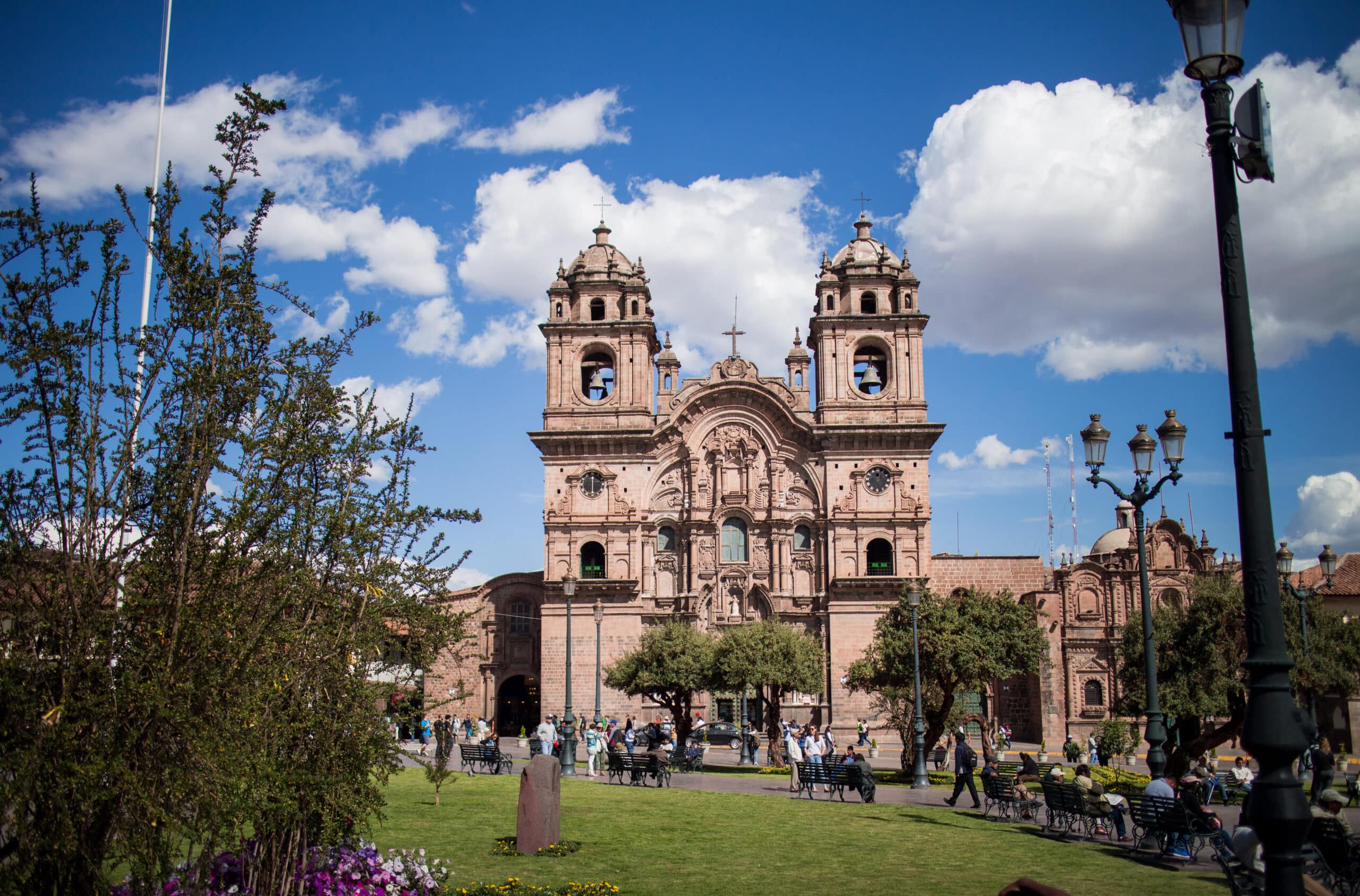
Afternoon: After you finish lunch at Morena Kitchen, explore the historical center of Cusco and check out Plaza de Armas and 12 angled stone. Walk around the plaza to find a travel operator to book your day trips to Sacred Valley, Salinas & Moray, and Rainbow Mountain.
There are a lot of travel operators in Cusco so make sure you find a reputable one for your day trips from Cusco. If a tour is too cheap, it may be a bad idea.
We walked around and compared a few travel operators in Cusco and the best travel operator in Cusco we found was SAS. Some of the cheaper tour operators couldn’t even tell us exactly what’s included in the tour.
For the SAS day trips we did, each cost about USD30 so it’s already really cheap. Since you only have 3-4 days in Cusco out of your 2 weeks in Peru and Bolivia, it’s better to spend a little more money and not have a shitty tour ruin your Peru and Bolivia experience.
If you booked Inca Trail, check in with your travel operator. While you walk around the historical center of Cusco, you will notice that there are women in historical Peruvian clothing with cute alcapas and llamas for photo ops for a small payment.
Dinner: Chicha is a pretty upscale Peruvian restaurant in Cusco. But you can look for some others ones from trip adviser.
If you are not too sick from the altitude, walk around at night is really nice because the old town area can be lively and it’s very safe to walk around at night.
There are also a lot of markets and shops in Cusco historical center so get some snacks and water for the next few days. There is also a Starbucks Coffee in Cusco if you REALLY want some Starbucks and comfort food.
Where to Stay in Cusco
Cusco has a lot of hotels, ranging from hostels to luxury five star hotels with oxygen enriched rooms. We stayed in medium priced hotel called Hotel Garcilaso, which is actually 2 hotels on the same street by the same owner. When we checked into Hotel Garcilaso, we were greeted with Cocoa tea and really friendly staff.
All the hotels in Cusco offer free Cocoa tea to help visitors fight altitude sickness. I’m not really sure if cocoa tea really helps with altitude but I knew there was no harm, so I drank so much of that tea and chewed on the tea leaves.
Each of the rooms in Hotel Garcilaso come with heater, free wifi, and free breakfast. One of my friend stayed in the JW Marriott with oxygen enriched rooms. He said the hotel was absolutely amazing.
Altitude Problem in Cusco
Before I started planning my 2 week Peru and Bolivia itinerary, I had no idea about altitude sickness. Once I started doing some serious research on the effect of altitude sickness I started getting really nervous about visiting Cusco.
As mentioned earlier, Cusco is in the Andes Mountain, with a 3400m (11k feet) altitude. In case you don’t know how high that is, planes reach 10k feet 7 minutes after takeoffs, so in other words, it’s really high.
Generally if you are taking an overnight bus from Lima to Cusco, you tend to fare better than flying from Lima to Cusco. During your bus ride, your body can start adjusting to the high altitude gradually but when you fly, you literally go from sea level to 11000 ft.
What are the Symptoms of High Altitude in Cusco?
Most likely when you first land in Cusco you will feel fine. But after a while you will start feeling your heart beating faster when you do simple activities such as walking and talking.
You will get out of breath more easily and quickly and your finger tips and feet will be tingly. You may also feel light headed and nauseous. In more severe cases of high altitude you may throw up.
There is no way to tell whether you will be suffering from altitude sickness or not ahead of time. Your physical condition, whether you are fit or not, how old and young you are, how skinny or fat you are do not determine how you will react to high altitude.
You may actually experience altitude sickness more if you are very active because your body is used to having more oxygen in the blood.
How Do You Prevent Altitude Sickness?
There is no guaranteed way of preventing altitude sickness, but you can always take altitude sickness pill (Diamox) 1-2 days before you travel to Cusco.
If you are traveling from the US, you need to get a doctor prescription for Diamox. You can buy Diamox in Peru but I did not do that. Even if you take altitude sickness pill before arriving to Cusco, you may still experience bad symptoms of altitude sickness. If you feel extremely unwell in Cusco, you should see a doctor. Usually hotels offer oxygen tanks but it’s not a long term solution.
If you want to spend more time in Cusco, check out this awesome post on all the things you can do in and around Cusco.
Peru Itinerary Day 3 – Sacred Valley Day Trip From Cusco
Morning: Get picked up at 8:30am to go on the all day Sacred Valley Day Trip. We used SAS as our tour operator and visited several ancient and sacred Inca archaeological sites such as Pisac and Ollantaytambo.
We also stopped by the village of Chincheros on the way back to Cusco. Check out my blog post on the Sacred Valley Day Trip from Cusco.

If there is only one Cusco tour you can do, the Sacred Valley Day Trip should be the one. The Sacred Valley is the heart of Inca Empire with a large area filled with fertile lands and Spanish colonial towns.

The Sacred Valley Day Trip tour shows you a lot of history and traditions of the Inca people and you will understand why buildings are looking a certain way and how life was in the Inca Empire before the Spanish invasion. The views during the Sacred Valley Day Trip are just impressive along the way.

The Sacred Valley is also at a lower altitude than Cusco so it definitely helps you to acclimate. In fact a lot of visitors come to the Sacred Valley (namely Ollantaytambo) directly after they land in Cusco to acclimate.
Peru Itinerary Day 4 – 7 Inca Trail to Machu Picchu
After getting acclimated in Cusco for a couple of days, we were so excited (and nervous) to start our 4 day 3 night classic Inca Trail (Camino del Inca) with Alpaca Expedition!
We started our Inca Trail bright and early at 3:30am on the 4th day of the 2 week Peru and Bolivia trip. You will realize that this Peru and Bolivia itinerary involves a lot of waking up at 3am type of days.
Your Inca trail hiking company will pick you up from your hotel and drive for 2 hours before stopping for breakfast and registration. Make sure you bring your passport with you or you will not be able to register or hike the Inca Trail.
The Inca trail tour company would have booked your Inca Trail permit and Machu Picchu tickets ahead of time. The offices just need to verify that your passport information to match your Inca Trail permit.
There are only a few hundreds of Inca trail permits issued everyday, and most of the people holding the Inca Trail permit are actually porters and not tourists.
The 1st day of the Inca Trail was generally flat with some up and downs until the last 1.5 hours which was straight up. During the first day you will pass a few villages on the Inca Trail and find bathrooms and snack shops. You will also see mules carrying goods walking on the trail.

Occasionally you see hikes hiking back to the beginning of the Inca Trail for one reason or another. Note that you can turn back on the Inca Trail if you fell unwell the first 2 days. After the first 2 days there is no turning back, you will need to keep going until the end.

The 2nd day of Inca Trail was the longest and the most difficult day hiking up Dead Woman’s Pass (peak at 4200m) followed by a 2 hour decent then another 1.5 hour steep ascend. Finally you finish the day after another 1.5 hour downhill.

Each Inca Trail company will have a different itinerary and camp site. Our company (Alpaca Expedition) has a really long Day 1 and Day 2 whereas other companies have a more chill schedule than us. But on Day 3 they will have to hike more to make up the difference.

The 3rd day of the Inca Trail was the prettiest and easiest day for us, with 1 hour uphill and 3 hour downhill.

We finished the day at 1 pm and had free time to explore a cool ruin nearby. Most of the other hiking companies will finish the night at near by camp site as us, so if you took it easier the first 2 days, you will hike a lot on Day 3 and vice versa.

On the last day of Inca Trail we got up at 3am in order to be one of the first to get to Sun Gate to see sunrise over Machu Picchu. You then hike down 1 hour to Machu Picchu!
After getting there, your tour guide will take a lot of photos for you, then you actually will leave Machu Picchu to have your entrance tickets validated. You will then re-enter Machu Picchu the same way regular Machu Picchu tourists (who take the train). The tour guide will give you a 2-3 hour tour of Machu Picchu to explain the history and different buildings, etc.
If you booked Huayna Picchu hike, this is when you will leave for that hike. Nobody from my group went to Huayna Picchu even if they signed up. After 3+ days on the Inca Trail, all you want to do after seeing Machu Picchu is to get a hot shower and sleep.
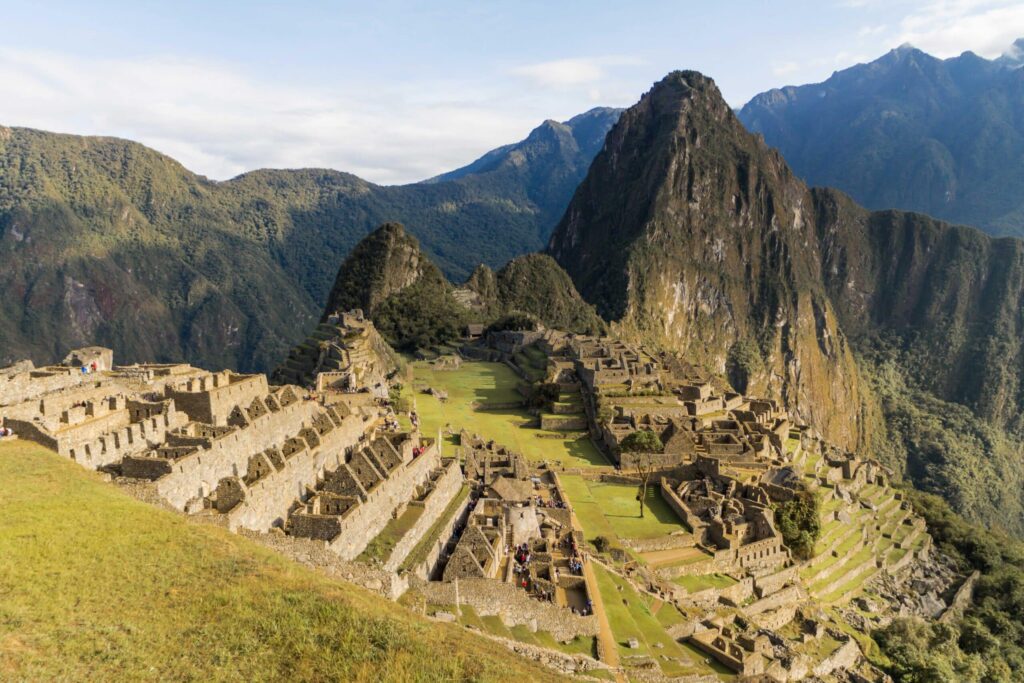
If you are already considering doing this hike, you should definitely do it! It’s strenuous and it’s tiring and dirty, but you are rewarded with amazing landscapes and visits to archaeological sites that nobody else get. You are also pampered by your guides and the porters who carry your things for you and cook for you.
At the end of the trail, Machu Picchu is really no longer the highlight of the trip because you’ve seen more amazing things on the trek. Read my post on the 4 day 3 night classic Inca Trail with Alpaca Expedition.
Peru Itinerary Day 8 – Moray & Salinas Day Trip + Cusco Chocolate Making Class
After the 4 day Inca Trail, you may want to take it easy and fit this short day trip in your Peru and Bolivia itinerary.

Morning: We were picked up from our Cusco hotel at 8:30am to visit the famous Salinas de Maras salt mine as well as Moray. We got back to Cusco around 3pm.
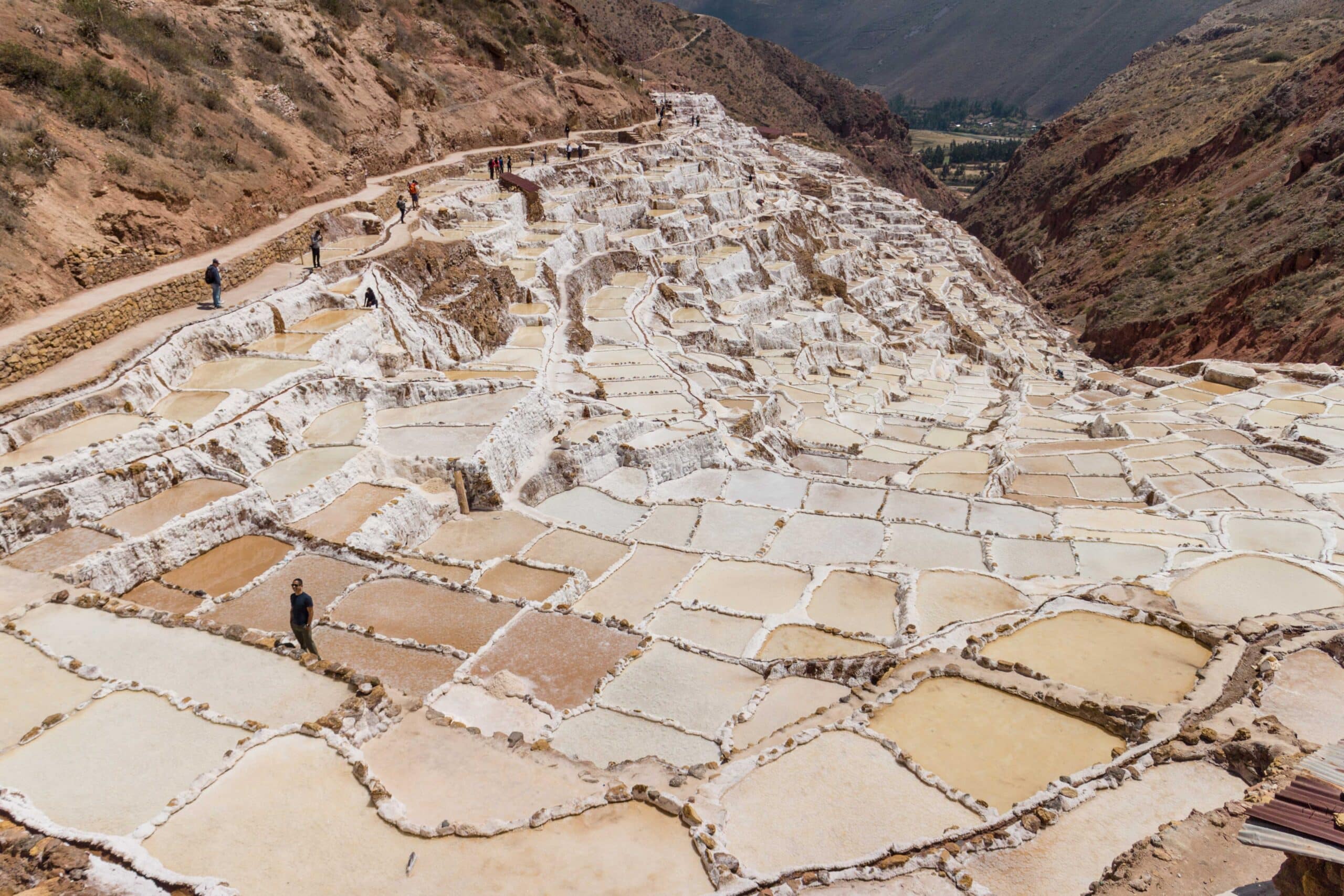
Afternoon: If you are a chocolate lover, definitely check out the Chocolate Museum in Cusco. Not do they sell all sorts of chocolates, they also offer chocolate making classes for 35 USD. I LOVE chocolate and definitely enjoyed the class while we learned how to make coca tea, hot chocolate, and our own milk/dark chocolate to take home.
Dinner: If you are a fan of green/healthy food, check out this restaurant in Cusco called Greens. Really liked their juices as well as wraps!
Peru Itinerary Day 9 – Rainbow Mountain Hike from Cusco
Aside from the Inca Trail, the Rainbow Mountain hike is probably the hardest day on the Peru and Bolivia itinerary.
Morning: Pick up at 3:30am from our hotel by SAS. Drove 3-4 hours to Rainbow Mountain area for breakfast, followed by another hour drive to the Rainbow Mountain trail head.
You can hike up or take a horse up Rainbow Mountain, although you have to walk the last part of the Rainbow Mountain hike to get to the summit at 5200m which was a killer.

You finish the Rainbow Mountain hike at around 1pm and get back to Cusco around 5pm. The view along the Rainbow Mountain hike is amazing and the experience is unique, read more about the entire Rainbow Mounta hike here.

You can also easily book a Rainbow Mountain Day Trip from Cusco here.
Dinner in Cusco: We checked out this local sandwich shop in Cusco called La Sangucheria 154 which was cheap and amazing! This will be your last night in Cusco so make sure to walk around and enjoy the night scene.
Bolivia Itinerary Day 10 – La Paz & Uyuni, Bolivia
After 9 days in Peru, it is now time to move to the Bolivia part of this 2 week Peru and Bolivia itinerary.
Morning: Take the earliest flight from Cusco to La Paz in Bolivia so you have the whole day to tour La Paz, the capital city of Bolivia.
The flight from Cusco to La Paz is about an hour and immigration at the Bolivia airport takes another hour or so. Once you go through immigration (US citizens need a Bolivia tourist visa), talk to information desk on where you should go in La Paz.
If you are a US citizen, you can either get a Bolivia tourist visa at the consulate before your 2 week Peru and Bolivia trip or get the Bolivia tourist visa on arrival at the La Paz Airport.
I did the former and my friends did the latter, both worked out well. You just have to make sure you bring all the required document for the Bolivia visa and exact change in USD before you arrive in Bolivia, otherwise you risk getting deported.
Half a Day in La Paz: Take a taxi from La Paz airport to the cable car station (red line, 16 de Julio Station) for about 30 Bolivianos. Again the taxi drivers will ask for 45 or more but don’t budge! We were firm on paying no more than 30 and they finally agreed.
La Paz is an interesting city in a sense that the higher altitude you are (aka El Alto), the poorer the community is. So as you go lower and lower in altitude, the city gets nicer and more affluent. I would not recommend walking around El Alto.

The Cable car is local’s way of getting from El Alto to many other parts of the city. The cable car costs 3 Bolivianos so take the red line to the end and you are close to the city center. Walk 15 minutes to the Witch Market and Plaza San Francisco.
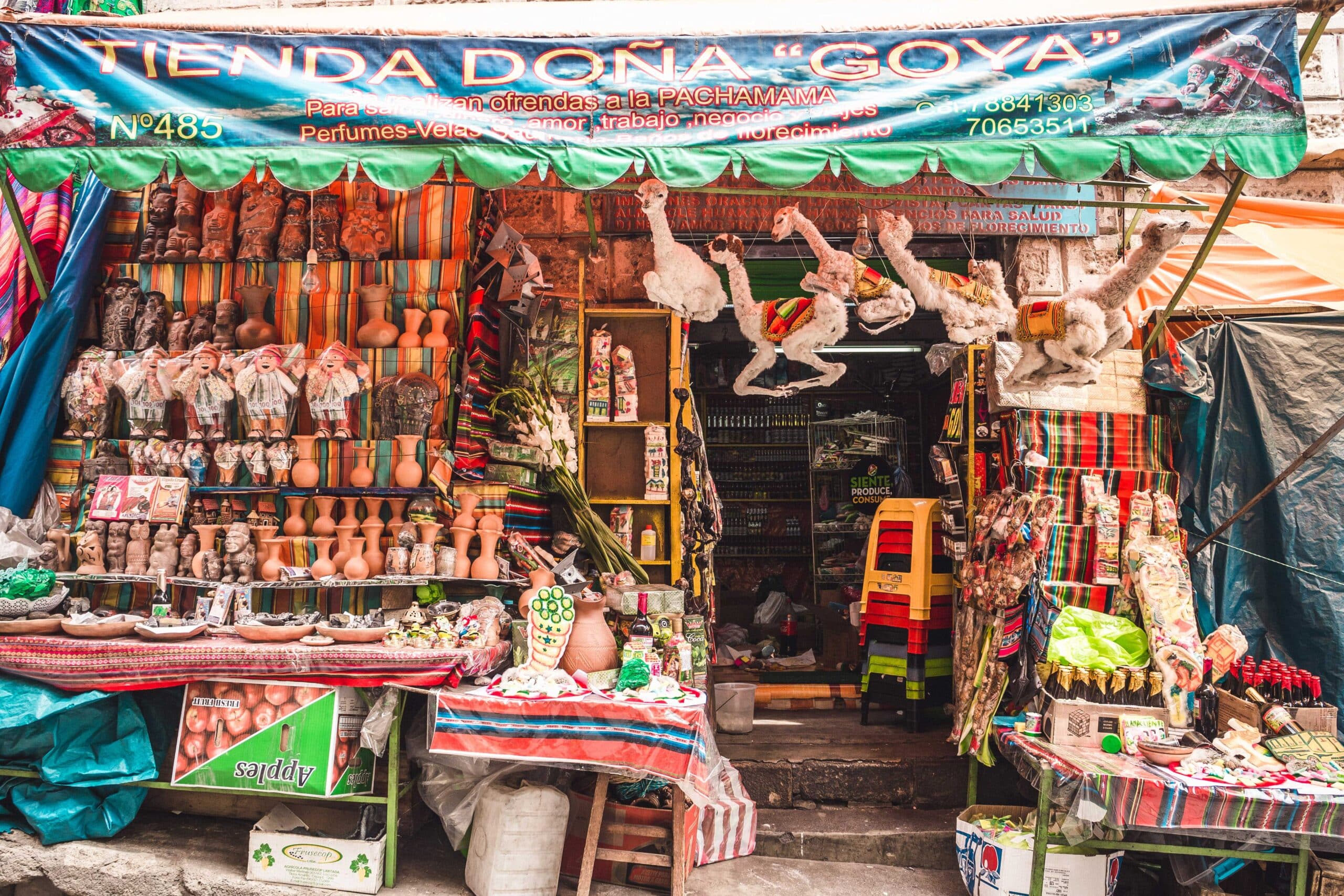
Lunch in La Paz: Try local food, such as lunch specials or Saltenas.

Afternoon: Explore downtown La Paz more or if you have time, head to Zona Sur, the nicest neighborhood in La Paz. Take a cab back to the airport to catch your flight.
Evening: We took Amaszonas airline to Uyuni because I heard they are very on time compare to other Bolivian airlines. Have your tour company pick you up from the airport. My tour company, Quechua Connection 4WD picked us up and took us to their office for payment and confirmed pick up time the next day for our 3 day Salt Flat tour.
Where to stay in Uyuni
There aren’t many nice hotels in Uyuni as it is a really small and remote town. We stayed at Hotel de Sal Casa Andina which was really nice with spacious rooms, 24 hour tea and coffee and free wifi and breakfast next day. There are hostels in Uyuni as well such as Hostal Castillo de Liliana.
Bolivia Itinerary Day 11-13 Uyuni Salt Flats 3 Day Tour, Bolivia
You will get picked up around 10am on Day 1 of your 3 day Uyuni Salt Flats tour. Each day’s itinerary is really different and you will see a lot of different landscape.
The 3 day Salt Flats tour actually only spend 1 day on the Salt Flats and the rest of the time visiting lagoons, deserts, geyser, hot springs, etc. For more details on the 3 day tour, be sure to check out this extensive guide of the 3 day Uyuni Salt Flats Tour.

We used Quchua Connection 4wd for the Uyuni Salts Flat 3 Day Tour and they were really good. The other reputable operator is Red Planet.

At the end of Day 3 you will be driven back to the town of Uyuni to take the last flight back to La Paz.
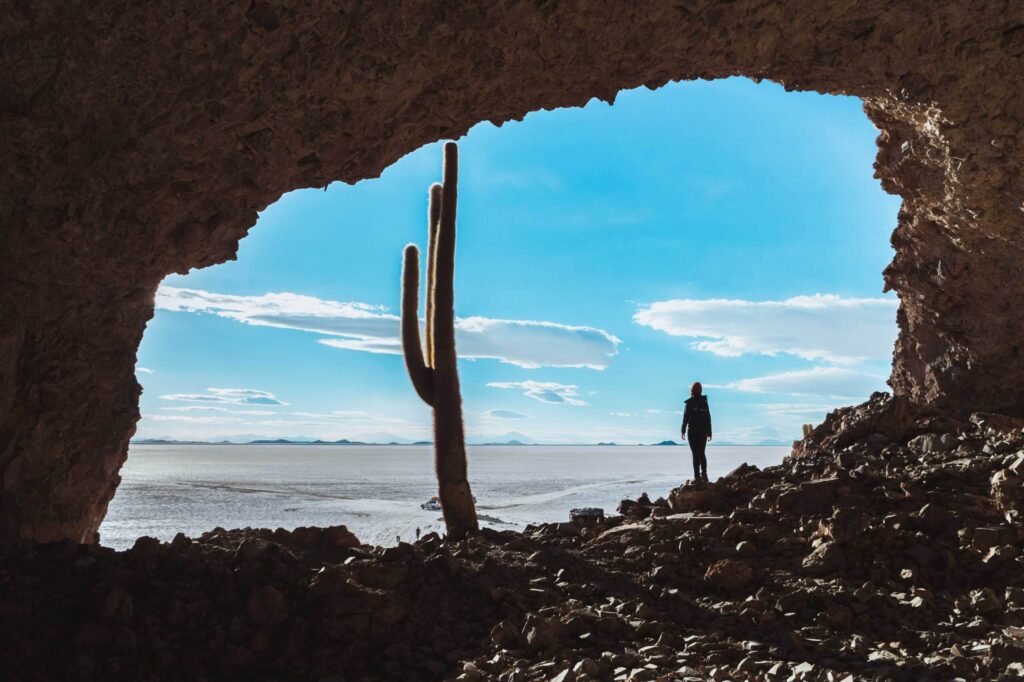
Food On the Uyuni Salt Flats Tour
The Salt Flats tour covers 3 meals a day so you don’t have to worry! After getting back to Uyuni and before your flight, you will have some time to eat in Uyuni. We ate at Restaurant Cactus and the food was really good (they offer Bolivia & Korean food) but it took a really really long time to get our food.


Accommodation on the Uyuni Salt Flats Tour
If you plan to fly back to La Paz after your 3 day tour, you will have to take the last flight around 8:30pm. If you were like me and planning to fly back home the next day at 3:30am or 8am, then I would suggest that you either spend a few hours resting at the La Paz airport (the airport has an hourly hotel) or rest at a hostel near the hotel.
It was a lot cheaper for us to go to a hostel called Hostal Internacional. The guy from our La Paz hostel picked us up from the airport for free and was really nice and helpful. Even though we only got 2 hours of sleep that night, it was still nice to be able to shower after 3 days of no showering on the Salt Flats.
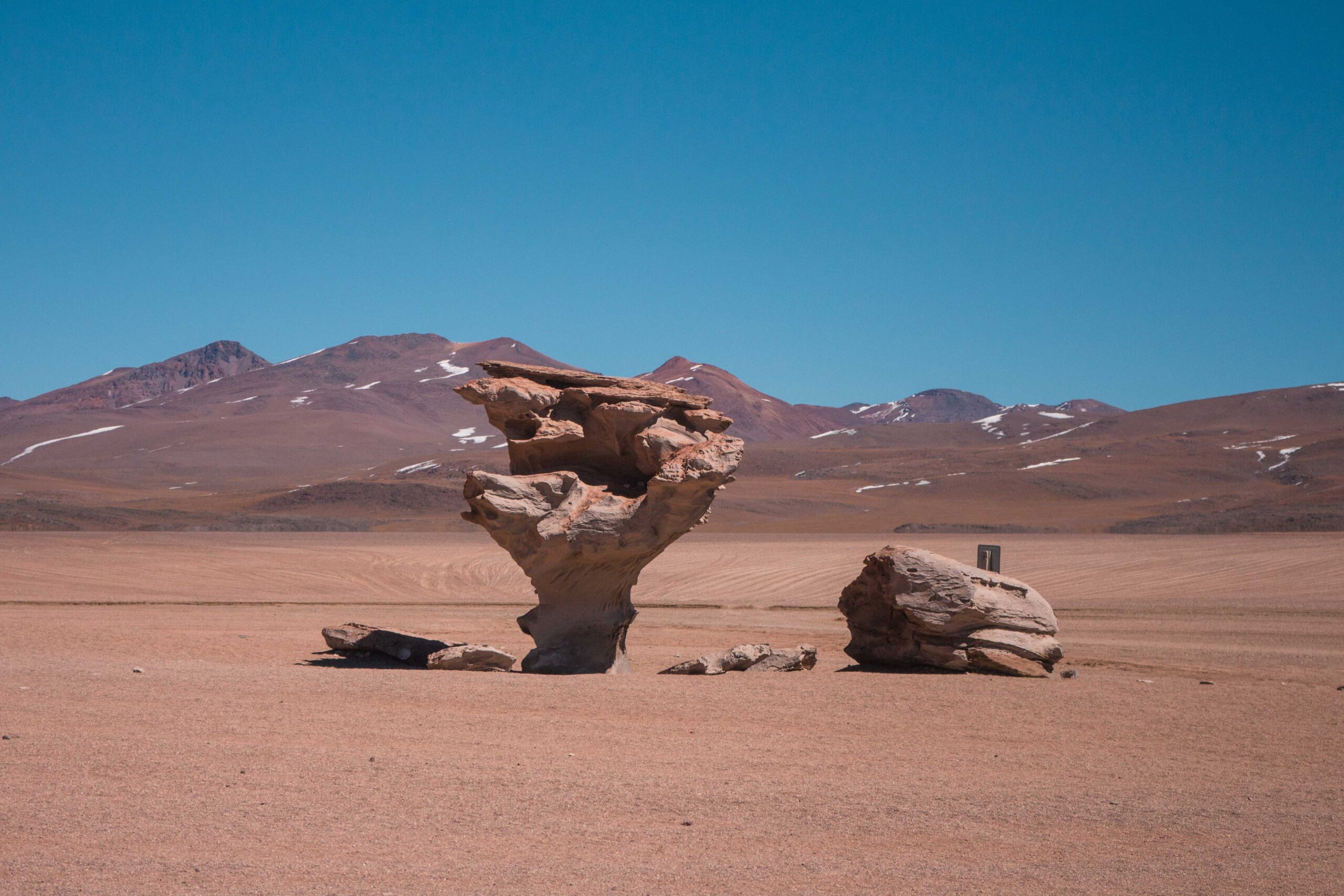


Day 14 – Layover in Bogota, Colombia & Return Flight
Morning: Rise and shine! There is a 3:30am flight out of La Paz to Bogota, Colombia for many international connections.
The bad thing is you will probably get at most 2 hours of sleep the night before. The good thing is you can nap on the flight and arrive bright and early in the beautiful city of Bogota, which is very different from the desert landscape of your previous 3 days.

One thing I did not expect was how green and lush Bogota was. We had an 10 hour layover in Bogota and we did not leave it to waste.
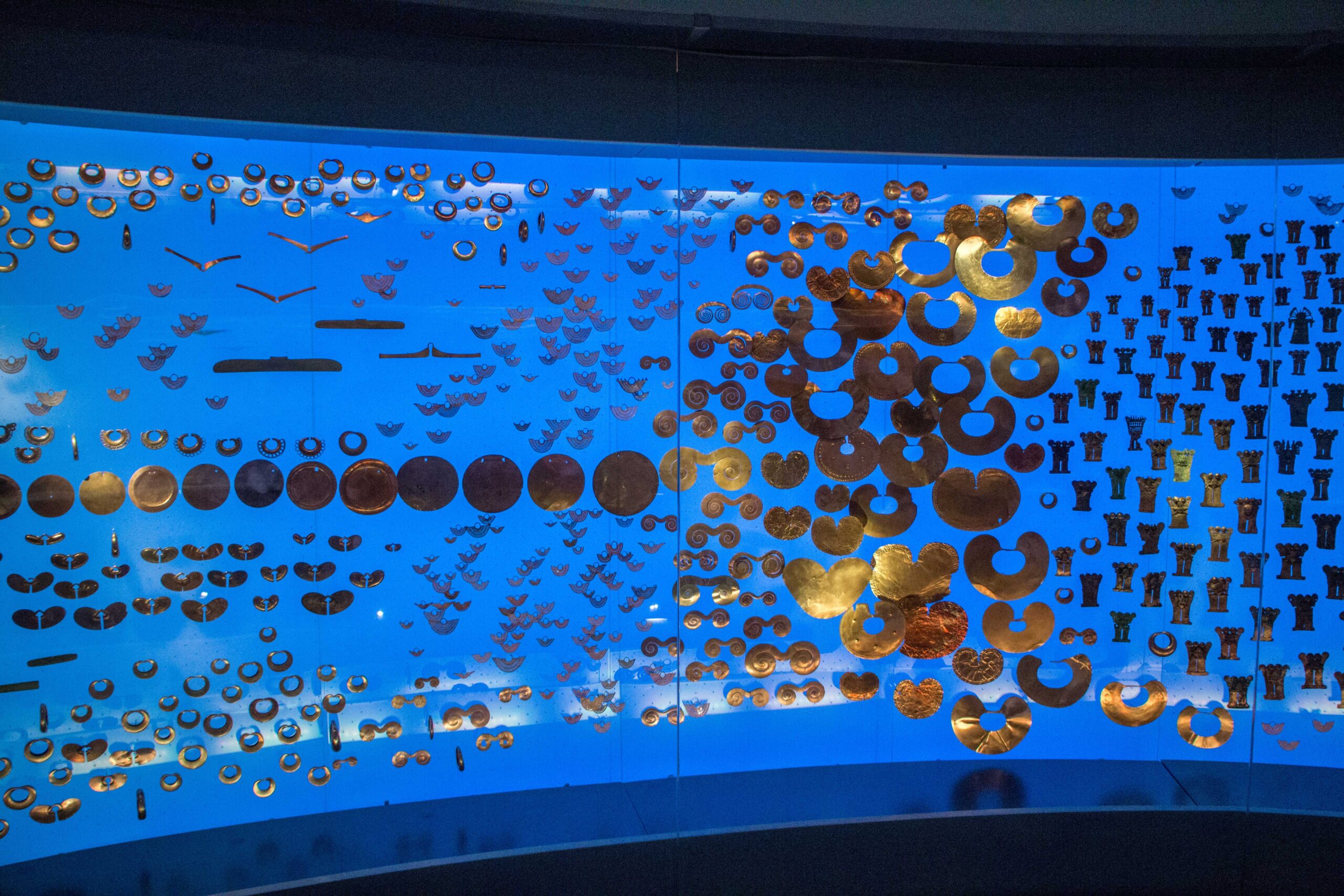
For convenience reasons, many people book a private city tour of Bogota. The private tours takes you to a Bogota local market, the Monserrat, which is beautiful, the Gold Museum and other downtown attractions. It also allows you to try many exotic fruits, local street food as well as the world renowned Colombian coffee.

The private Bogota city tour will drop you back off in the airport in time for your international flight home.



Final Thoughts on 2 Weeks in Peru & Bolivia
A few things we didn’t get to include on this Peru and Bolivia itinerary were Arequipa, Lake Titicaca and Huacachina. We simply didn’t have time and the logistics didn’t work out.
However, if you plan to take the bus from Cusco to La Paz, you can pass Lake Titicaca on your way to Bolivia. Regardless of what you do, Peru and Bolivia are such fun places to visit and you simply cannot find those landscape anywhere else in the world.
For additional readings to help you plan your Peru and Bolivia itinerary, check out the blog below on Peru & Bolivia:
Visiting Peru Guide: https://www.easttowestrms.com/southamerica/peru/
Know Before You Visit Peru and Bolivia
Should I worry about altitude sickness in Peru and Bolivia? YES. Most of the places on this Peru and Bolivia itinerary have very high altitude (above 3000 meter or 10,000ft). You should get altitude sickness pills before you go. Lima in Peru is at sea level, so you don’t need to worry about getting altitude sickness.
What should I pack for Peru and Bolivia? You should pack warm! High altitude = warm & sunburn during the day under the sun and freezing at night.
For packing tips, see my post on how to pack for the Inca Trail. Bring hiking gear to Peru and Bolivia, especially good hiking shoes. You will need them! Make sure you bring enough cash for tips, bathroom, snacks and emergency; there is no ATM once you are on the Inca Trail and the Uyuni Salt Flat tour
Do American Citizens need a tourist visa to visit Peru? If you are an American citizen, then you do not need a tourist visa to visit Peru.
Do American Citizens need a tourist visa to visit Bolivia? If you are an American citizen, then you need a tourist visa to visit Bolivia. You can get the Bolivia visa on arrival at airports, but make sure to bring necessary documents and cash in USD.
Even though you can get the Bolivia tourist visa at the airport, I still recommend that you obtain the Bolivia tourist visa beforehand because I have heard stories where people were denied entry. You should check out Bolivia SIGEMIG at Natvisa.com.
How early should I book the Inca Trail? You will need advanced booking for the Inca Trail (I recommend at least 6-7 months in advance) due to limited number of hiking permits available. When I was hiking the Inca Trail, there were only 400 hikers allowed one day, and more than half of the hikers were porters.
However, if you do not have time to fit the Inca Trail on your Peru and Bolivia itinerary, you can always do a day trip, or a 2 day hike to Machu Picchu. Other treks include Salkantay Trek to Machu Picchu (much higher altitude but flatter than the Inca Trail) and Lares Trek.
Do I need to tip the guides in Peru and Bolivia? Yes, you need to tip you guides and porters. In fact the porters during the Inca Trail live off tips you give them. They work a lot and their job is extremely dangerous, so please be generous when you tip your guide and porters.
Do I need to speak Spanish to visit Peru and Bolivia? It would definitely be helpful to know some Spanish before you visit. However most of the touristy places in Peru are tourist friendly so you don’t really need to speak Spanish.
However I found it more difficult to find people who speak good English in Bolivia. Even the information desk people at the La Paz Airport in Bolivia did not really speak English that well. However, all the tour guides in both Peru and Bolivia speak English well.
Can I use drones in Peru and Bolivia? In Peru, all the touristy places have signs prohibit drone usage, and you definitely cannot use a drone at Machu Picchu or on the Inca Trail. There aren’t really clear rules about flying a drone in Bolivia. You can try to bring it and fly it on the Salar de Uyuni.
What is the Peruvian currency? The Peruvian currency is Peruvian Sol.
What is the Bolivia currency? The Bolivian currency is Bolivianos.
Can I use USD in Peru? Can I use USD in Bolivia? If you are going to very touristy places (all the places in my Peru and Bolivia itinerary), you can pay many tours and services in USD. We could pay for the Inca Trail in USD as well as all the day trips from Cusco and the Uyuni Salar tour.
Where can I exchange currency in Bolivia? The best bet to exchange Bolivianos is at the La Paz airport. There are a row of ATMs in a backroom in the airport. I did not see any currency exchange in Uyuni.
Where can I exchange currency in Lima? The best bet to exchange Sols is at the Lima airport.
Where can I exchange currency in Cusco? There are ATMs on the street in Cusco in the old town near Plaza de Armas.
Can I use credit card in Peru and Bolivia? You can use credit card at most major restaurants and hotels in Peru but you will need cash to tip the guides and porters as well as pay for the bathrooms and national park fee in Bolivia. You can use credit card to pay for your Uyuni Salt Flat tour and Inca Trail but the tour companies will charge you 5% credit card fee if you do so.
Like this post? Pin this Peru and Bolivia itinerary to Pinterest!

